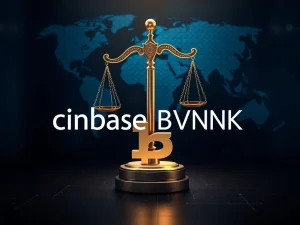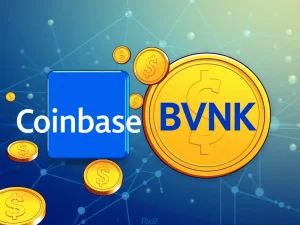Crucial Warning: Tokenized Stocks Pose Investor Misunderstanding Risk, Says EU Regulator

The landscape of digital assets continues to evolve rapidly. Consequently, new financial instruments emerge, promising innovation and efficiency. Among these, tokenized stocks have garnered significant attention. However, a recent warning from the European Union’s markets watchdog, ESMA, highlights potential pitfalls. Investors must understand the unique characteristics of these digital assets, particularly regarding shareholder rights and inherent risks. This concern underscores the critical need for robust EU financial regulation to safeguard market participants.
ESMA Raises Concerns Over Tokenized Stocks and Investor Protection Crypto
The European Securities and Markets Authority (ESMA) recently voiced significant concerns about tokenized stocks. Natasha Cazenave, ESMA’s executive director, stated that these instruments could lead to “investor misunderstanding.” Speaking at a conference in Dubrovnik, Croatia, Cazenave elaborated on the distinctions between tokenized assets and traditional shares. Typically, tokenized instruments do not grant holders the same rights as direct shareholders. For instance, while they offer always-on access and fractionalization, they often function as synthetic claims rather than direct ownership. This structural difference creates a specific risk of confusion for investors. Therefore, clear communication and strong safeguards are essential.
Furthermore, the World Federation of Exchanges (WFE) echoed these concerns. Late last month, the WFE urged global securities regulators, including ESMA, to intensify their scrutiny of tokenized stocks. They argued that these digital assets frequently lack the established investor protection crypto mechanisms built into the actual underlying assets they track. This call to action emphasizes the growing need for a harmonized regulatory approach to address these emerging financial products effectively.
Illiquidity and Interoperability: Challenges for Blockchain in Finance
Despite the promising potential, the widespread adoption of blockchain in finance still faces considerable hurdles. Cazenave acknowledged that the EU has taken a leading role in asset tokenization. Initiatives and pilot programs, dating back to 2019, involved the bloc’s investment bank and Germany’s finance ministry. These demonstrations indeed showcased how tokenization could broaden access, lower issuance costs, and support faster, more efficient secondary trading. Nevertheless, Cazenave pointed out significant limitations. Most tokenization initiatives remain small and largely illiquid. Often, instruments are issued via private placements and held until maturity. Additionally, interoperability between different issuance platforms is currently limited. This lack of seamless interaction hinders broader market participation and liquidity.
These challenges highlight a critical phase for the nascent market. Developing robust infrastructure and standardized protocols will be vital for future growth. Consequently, regulators and industry participants must collaborate to overcome these technical and operational barriers. Only then can the full potential of blockchain in finance be realized, transforming traditional financial markets.
ESMA Crypto and the Path Forward for EU Financial Regulation
ESMA maintains a keen interest in exploring new technologies. Natasha Cazenave reiterated ESMA’s commitment to innovation, but always with a focus on investor safety and financial stability. She emphasized that tokenization could improve interoperability, transparency, and cross-border efficiency while simultaneously cutting costs. However, these benefits are contingent upon implementation within the “right legal framework.” The EU has already launched a pilot regime for blockchain technology. This initiative allows firms to test innovative products with certain regulatory exemptions. Cazenave believes that this pilot, combined with lessons learned from the EU’s Markets in Crypto-Assets (MiCA) Regulation, will provide crucial insights. These insights will inform how to effectively regulate tokenizing assets, ensuring both innovation and robust EU financial regulation.
The proactive stance of ESMA crypto regulation demonstrates a balanced approach. Regulators aim to foster technological advancement while mitigating potential risks. This strategy is vital for building trust and ensuring the long-term sustainability of digital asset markets. Ultimately, a clear and comprehensive regulatory framework will be key to unlocking the true potential of tokenized assets.
Industry Players Embrace Tokenized Stocks Amidst Scrutiny
The interest in tokenized stocks is not limited to regulators. Major industry players are actively exploring and launching such offerings. For example, US-based trading platform Robinhood Markets introduced tokenized stocks for trading in the EU in June. This move, however, has attracted scrutiny from some represented companies and EU member nations. Furthermore, US-based crypto exchange Kraken also launched a tokenized stock offering in June. Notably, Kraken has not made this offering available in the US or the EU, reflecting the complex global regulatory landscape. Rival exchange Coinbase Global has also sought approval from regulators to launch its own tokenized stock offering. These developments underscore the growing industry momentum behind tokenization.
The push by these prominent platforms indicates a strong belief in the future of tokenized assets. Yet, the varied approaches to market availability highlight the fragmented regulatory environment. As such, these companies navigate a complex web of rules and expectations. This dynamic interplay between innovation and regulation will undoubtedly shape the future of digital finance. Ultimately, continued dialogue between industry and regulators is essential to ensure responsible growth and effective investor protection crypto measures.
Navigating the Future of Tokenized Assets and EU Regulation
The emergence of tokenized stocks represents a significant evolution in financial markets. While these assets offer compelling advantages, the warnings from ESMA highlight critical areas requiring attention. Ensuring clear communication and robust investor protection crypto mechanisms remains paramount. The EU’s proactive approach to blockchain in finance, through pilot programs and regulatory frameworks like MiCA, positions it as a leader in this space. However, challenges such as illiquidity and interoperability persist. The engagement of major players like Robinhood and Coinbase further signals the transformative potential of tokenization. Ultimately, the careful balance between fostering innovation and implementing effective EU financial regulation will define the success and safety of tokenized assets for investors worldwide.







